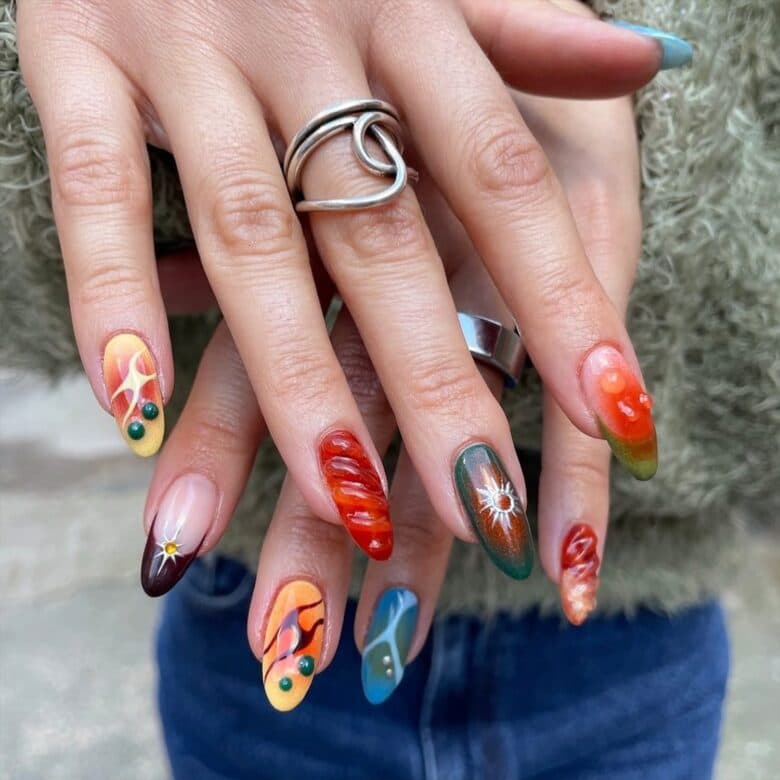The changing language of emojis
If a picture is worth a thousand words, then the linguistic significance of emojis should not be undersold. Originally meant to spice up SMS, the pictorial/semantic hybrids are interchangeable with written words for some— why type “alligator” when you could drop a little image into the mix? — and can even surpass their intended meanings. Take 💅🏻 (our personal fave). It doesn’t necessarily always mean you’re off to the nail salon: it generally indicates that you’re *in a mood* in a minimum of characters.
Throughout the iPhone age, the pictorial/semantic hybrid has dominated interpersonal exchanges and assumed unprecedented significance in how we express ourselves online (where would fuckbois be without 🙈?). Yet emojis can also be political, as the faux-universality of the Simpsons-yellow emoji people once showed us. As of 2015, emojis have been becoming more diverse with each iOS update: allowing a greater range of skin tones, same-sex couples and, now, biracial families and gender neutral options. The latest update, has also stepped away from the ableist norm by introducing emojis which could represent a wider range of abilities.
Whilst this certainly indicates that our methods of representing ourselves and the world online are becoming more nuanced (moving further away from the rudimentary images first available to us) it also bodes well for the future of digital language. It can take a long time for analogue language to correct its entrenched biases but it seems like the emojipedia is becoming fairer and more liberal with each software reboot. There’s also the fact that many of these emojis — even those that come with colloquial meanings attached — have a degree of universality, widening possibilities for communication. You don’t have to be Spanish to know that 💃🏻 means “party”.
Arguably, the emoji approval process is not as democratic as it needs to be. The Academy of emojis is Unicode, a company involved in standardising online scripts, codes and symbols, and it is them, rather than popular opinion, that determines whether a particular symbol is “needed” in the modern emoji lexicon. It’s not just this drawn-out approval process that’s deferring spontaneous emoji expression, it’s also moderated by social media giants. As part of a wave of updates that’s also involved banning plastic surgery filters and depictions of self harm, Facebook and Instagram have banned the use of erotically suggestive symbols in specific, explicitly sexual, contexts. Aubergines and peaches (which have become almost pornographic post-Call by Your Name) have been targeted in particular, as you might have expected.
The ban is a means of further limiting sex workers’ online expression, building on updates to Facebook’s Community Guidelines that seek to push anyone offering sexual services off its platforms. Now, however, the mere use of “contextually specific and commonly sexual emojis or emoji strings” is now sufficient to have an Instagram account flagged or removed for sexual solicitation. Even if our emojipedia becomes more diverse, it means little if individuals’ primary methods of online communication are being impinged upon.

